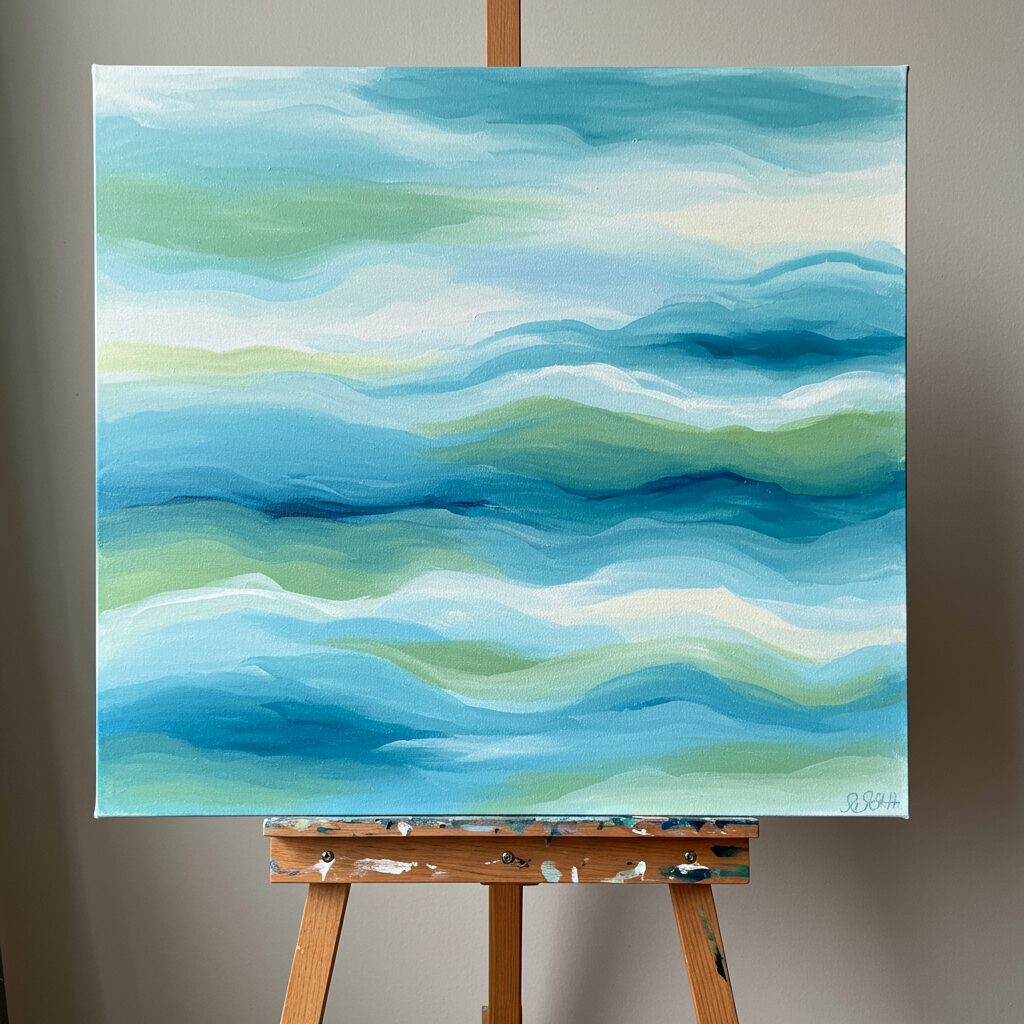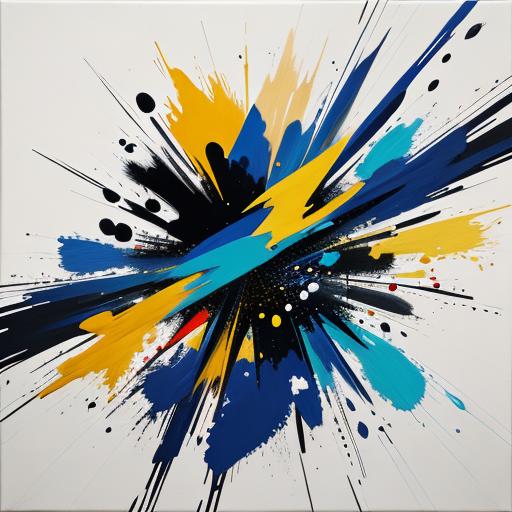Fun abstract painting offers the perfect escape from daily stress, making it an ideal form of art for relaxation. Unlike traditional methods that demand precision, this approach thrives without requiring any artistic experience or strict rules. It invites you to explore colours, shapes, and textures purely for the joy of creation. This therapeutic art form has gained popularity as more people discover its powerful benefits for mental well-being.
Key Points Summary
- Abstract painting requires no prior experience or artistic skills
- The process focuses on relaxation and stress relief rather than creating “perfect” art
- Simple techniques like color exploration and texture creation are beginner-friendly
- Regular painting practice can significantly reduce anxiety and improve mental wellness
- Essential supplies are affordable and easily accessible for home use
What Makes Abstract Painting So Much Fun?
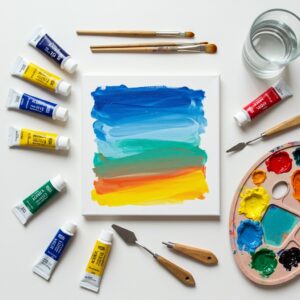
The beauty of fun abstract painting lies in its complete freedom from conventional art rules. There’s no right or wrong way to apply paint to canvas, which immediately removes the pressure many people feel when creating art. This liberation allows your mind to focus on the soothing rhythm of brush strokes and the satisfying blend of colors rather than worrying about proportions or realistic representations.
Breaking Free from Artistic Expectations
Traditional art often comes with expectations about skill level, technique, and final results. Abstract painting flips this concept entirely. The goal isn’t to create museum-worthy pieces but to enjoy the meditative process of mark-making and color exploration. This shift in mindset transforms painting from a potentially stressful activity into a genuinely relaxing experience.
The therapeutic benefits of creative expression have been recognized by art therapists for decades. When you engage in abstract painting, your brain releases endorphins and reduces cortisol levels, naturally decreasing stress and promoting feelings of well-being. This makes it an excellent art therapy activity you can do at home for managing daily pressures.
Getting Started: No Experience Required
Beginning your abstract painting journey requires minimal preparation and supplies. The beauty of this art form is its accessibility – you don’t need expensive materials or extensive training to create meaningful, relaxing artwork.
Essential Supplies for Beginners
| Supply Category | Recommended Items | Why It’s Important |
|---|---|---|
| Paints | Acrylic paints in primary colors plus white | Easy to use, quick-drying, water-based |
| Brushes | 2-3 different sizes (small, medium, large) | Variety allows for different textures |
| Canvas | Canvas boards or stretched canvas (8×10″ to 11×14″) | Affordable and perfect for experimentation |
| Palette | Disposable paper plates or reusable palette | For mixing colors and holding paint |
| Water & Rags | Glass of water and cloth rags | For cleaning brushes between colors |
These basic supplies provide everything needed to explore various easy abstract painting techniques without overwhelming your budget or workspace.
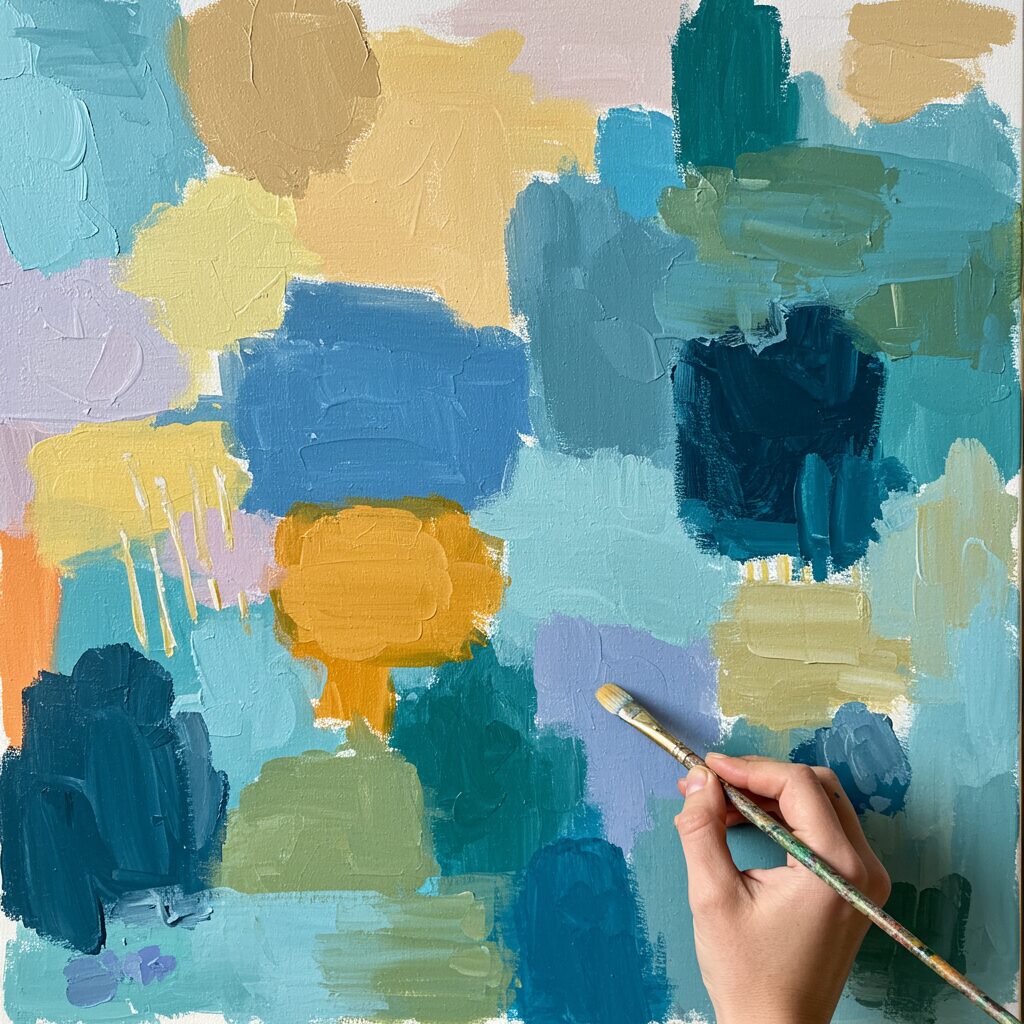
Setting Up Your Creative Space
Creating a dedicated painting area, even if it’s just a corner of your kitchen table, helps establish a routine and signals to your brain that it’s time to relax. Good lighting, whether natural or artificial, makes the experience more enjoyable and helps you see color relationships clearly.
Consider playing soft background music or nature sounds to enhance the meditative quality of your painting session. Many artists find that instrumental music helps them enter a flow state more easily.
Fun Abstract Painting Techniques for Stress Relief
The techniques used in abstract painting are intentionally simple and intuitive. Rather than learning complex methods, you’ll explore basic approaches that feel natural and promote relaxation.
Color Exploration and Mixing
Start with primary colors (red, blue, yellow) plus white and black. The simple act of mixing colors on your palette can be incredibly soothing. Watch how blue and yellow create various shades of green, or how adding white to any color creates softer, more peaceful tones.
Technique Tip: Don’t overthink color choices. Trust your instincts and choose colors that appeal to you in the moment. Your emotional state often guides you toward colors that will be most therapeutic.
Texture Creation Methods
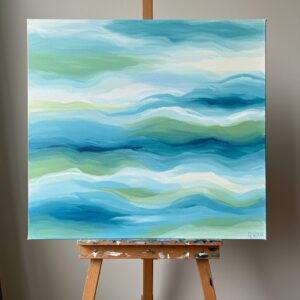
Abstract painting invites experimentation with texture. Try these beginner-friendly approaches:
- Dry brush technique: Use a relatively dry brush to create rough, scratchy textures
- Wet-on-wet blending: Apply wet paint over areas that are still damp for soft, flowing effects
- Palette knife work: Use a palette knife instead of a brush for thick, sculptural paint application
- Splattering: Gently flick paint from your brush for spontaneous, energetic marks
Intuitive Mark-Making
Allow your hand to move freely across the canvas without predetermined plans. This intuitive approach connects you with the meditative aspects of abstract painting. Focus on how the brush feels in your hand and how the paint responds to different pressures and movements.
The Science Behind Painting and Relaxation
Research consistently shows that engaging in creative activities like abstract painting activates the brain’s reward center and promotes the release of dopamine, often called the “feel-good” neurotransmitter. This neurochemical response explains why many people report feeling happier and more relaxed after painting sessions.
“The repetitive motions involved in painting, combined with the focus required for color mixing and composition, create a meditative state similar to that achieved through mindfulness practices.”
American Art Therapy Association
The mindfulness aspect of abstract painting cannot be overstated. When you’re focused on mixing the perfect shade of purple or deciding where to place your next brush stroke, your mind naturally shifts away from daily worries and enters a present-moment awareness that reduces anxiety and stress.
Project Ideas for Immediate Stress Relief
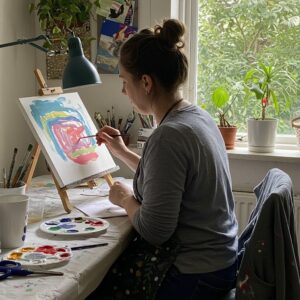
10-Minute Relaxation Paintings
Sometimes you only have a few minutes to decompress. Create small, quick abstract pieces focusing on one simple element:
- Color gradient studies: Blend two complementary colors across a small canvas
- Texture experiments: Focus on one texture technique for the entire piece
- Emotional color expression: Choose colors that match your current mood and apply them freely
Seasonal Abstract Projects
Connect with natural cycles through abstract painting ideas inspired by seasons:
- Spring: Fresh greens and bright yellows with flowing, organic shapes
- Summer: Bold, warm colors with energetic brush strokes
- Autumn: Earth tones blended with palette knife techniques
- Winter: Cool blues and whites with soft, gentle applications
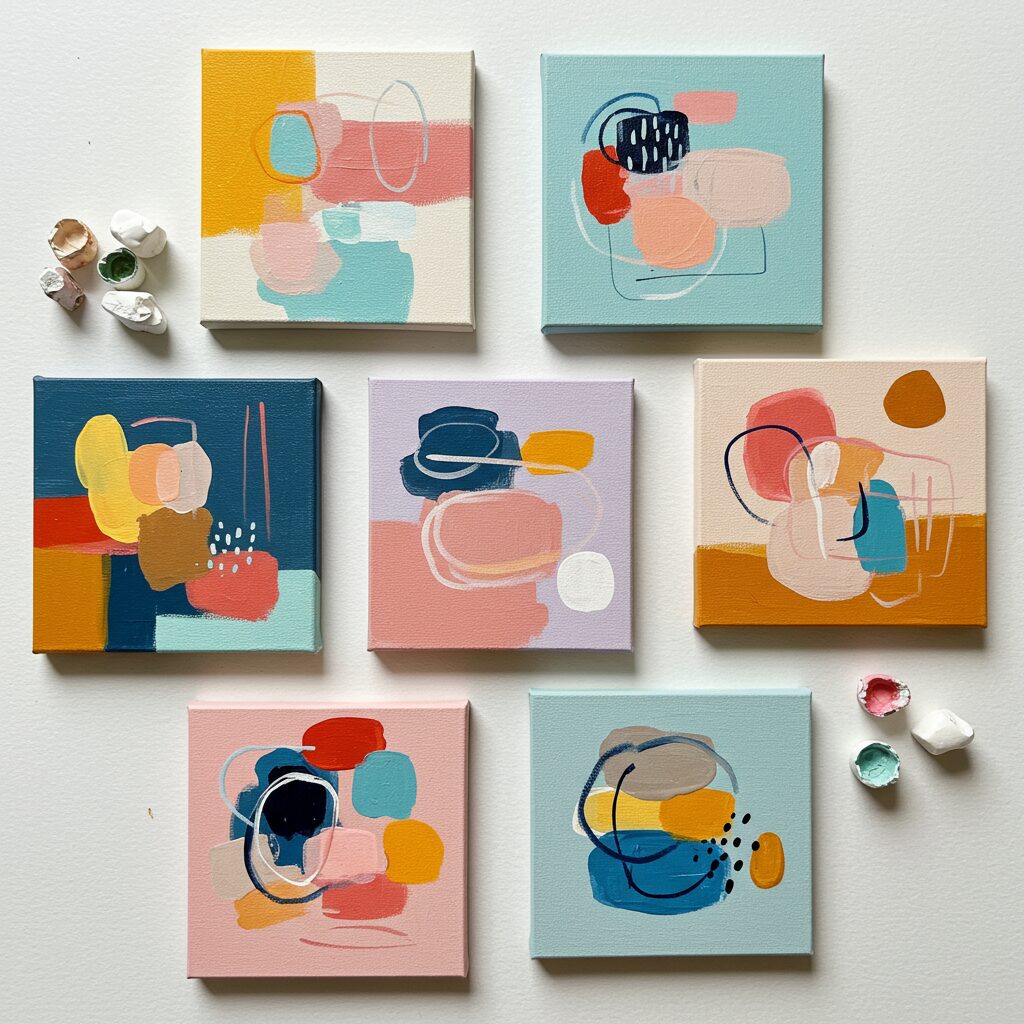
Building a Regular Painting Practice
Consistency amplifies the stress-relief benefits of abstract painting. Even 15-20 minutes of regular painting can significantly impact your overall well-being and creative confidence.
Creating a Sustainable Routine
Start small with realistic goals. Commit to painting for just 10 minutes twice a week rather than planning lengthy sessions you might skip. As the habit develops, you can naturally extend your painting time.
Consider joining online communities where you can share your work and connect with other beginning artists. The supportive environment helps maintain motivation and provides inspiration for new techniques and ideas.
Embracing the Process Over Product
Remember that the goal of fun abstract painting is relaxation and self-expression, not creating perfect artwork. Some of your paintings will be more successful than others, and that’s completely normal. Each painting session provides valuable practice and stress relief regardless of the final result.
Making Abstract Painting Part of Your Self-Care Routine
Abstract painting fits naturally into broader self-care practices. Consider incorporating it with other wellness activities like meditation, yoga, or journaling. The creative expression complements these practices by providing a different outlet for processing emotions and reducing stress.
Many people find that painting in the evening helps them transition from work mode to relaxation, while others prefer morning sessions to start their day with creativity and calm focus.
Fun abstract painting offers an accessible, enjoyable path to stress relief and creative satisfaction. By embracing the no-rules philosophy and focusing on the therapeutic process rather than perfect results, you’ll discover a powerful tool for managing daily stress while exploring your creative potential. Start with simple supplies, trust your instincts, and allow yourself to play with colors and textures. The journey of abstract painting is as rewarding as any destination, providing immediate relaxation benefits and long-term creative growth.
Frequently Asked Questions
What supplies do I need for abstract painting?
Basic acrylic paints in primary colors, a few brushes of different sizes, canvas or canvas board, a palette, and water for cleaning brushes are all you need to start.
How to start abstract painting as a beginner?
Begin with simple color mixing exercises, focus on the process rather than the outcome, and experiment with different brush techniques without worrying about creating realistic images.
Is abstract painting hard to learn?
Not at all! Abstract painting is perfect for beginners because there are no strict rules to follow. The emphasis is on creative expression and relaxation rather than technical skill.
What colors work best for abstract painting?
Start with primary colors (red, blue, yellow) plus white and black. These allow you to mix any color you need and keep your initial supply costs low.
How does painting help with stress?
Painting engages your mind in the present moment, releases mood-boosting endorphins, and provides a healthy outlet for emotional expression, all of which naturally reduce stress levels.
Best canvas size for abstract painting?
For beginners, 8×10″ to 11×14″ canvas boards are ideal. They’re affordable, manageable in size, and perfect for experimenting with different techniques.
Important External Resources
- American Art Therapy Association – Professional organization with research on therapeutic benefits of art
- Blick Art Materials – Comprehensive art supply retailer with beginner guides
- Jackson’s Art Supplies – Educational articles and technique tutorials
- The Art Assignment (PBS) – Creative exercises and art education content
- Mindfulness and Art Therapy Research – Scientific studies on art therapy benefits
- Color Theory Basics – Understanding color relationships for better painting

